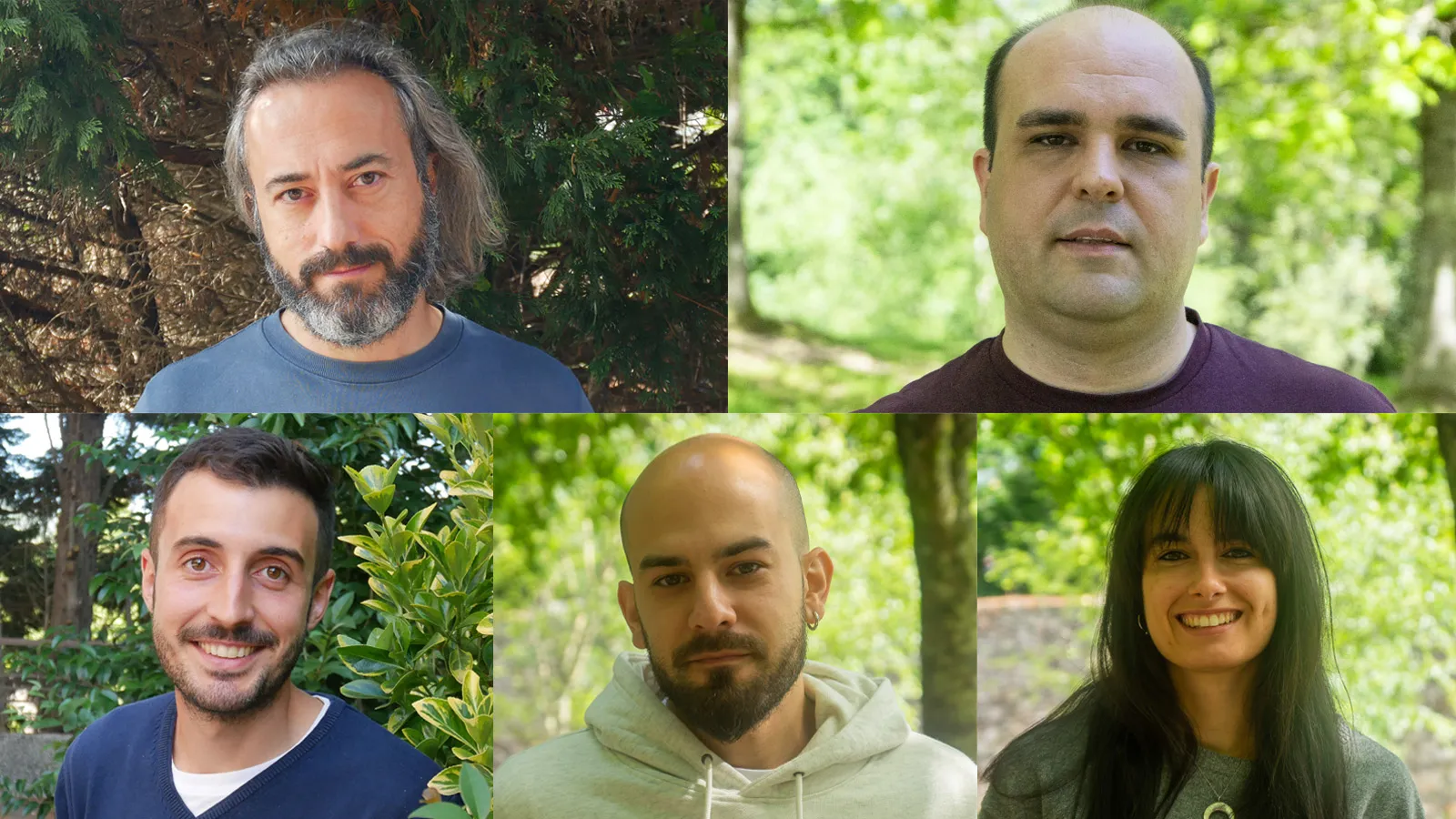‘Nature’ publica un traballo pioneiro sobre fisión nuclear no que participa o IGFAE



13.09.2019

Os estudantes do IGFAE Alberto Rivadulla Sánchez, Julián Lomba Castro e Marcos González Martínez acaban de obter as axudas da FPU (Axuda para a Formación de Porfesorado Universitario) convocadas anualmente polo Ministerio de Ciencia, Innovación e Universidades. Estes financian durante catro anos o desenvolvemento das súas teses doutorais no instituto.
Os seleccionados contribuirán á investigación no centro, á vez que adquirirán habilidades docentes universitarias. Todos eles, que fixeron os seus estudos en Física na USC (Universidade de Santiago de Compostela) tamén continuarán a súa formación á hora de preparar a súa tese no IGFAE, pertencente á universidade.
Encaixando a física cuántica coa teoría da relatividade de Einstein
A idea da tese de Alberto Rivadulla Sánchez perfilouse cando foi beneficiario dunha das axudas de colaboración do MECD durante o último ano da súa carreira. Centrarase na dualidade holográfica ou correspondencia AdS / CFT, un proxecto que xurdiu da teoría de cordas na década dos noventa e que intenta unificar a física dos pequenos e grandes: a mecánica cuántica e a teoría da relatividade xeral. Esta conxectura é interesante porque permite describir varios escenarios físicos, desde colisións de hadrón ata sistemas de materia condensada, o principal obxectivo da tese doutoral. Entre as moitas alternativas que aspiran a resolver esta encrucillada, Alberto está a traballar cunha serie de teorías que inclúen correccións sobre a Teoría da Relatividade de Einstein e que destacan polos seus resultados en cosmoloxía. O traballo terá como obxectivo comprender o seu significado no problema da física cuántica dual.
Investigando a existencia de partículas non descubertas
Julián Lomba Castro aproveitará a FPU para desenvolver a súa investigación sobre un tipo de desintegración de partículas que pode ser incorrecta no Modelo estándar, a teoría que explica os ingredientes fundamentais da materia e as súas interaccións. En concreto, intentará probar a universalidade leptónica, que prevé que todos os leptóns teñan as mesmas propiedades salvo as súas diferentes masas. Ao colisionar protóns, algunhas partículas convértense en leptóns e, medindo a frecuencia destas desintegracións, é posible verificar se se cumpre ou non a universalidade leptona. Algúns resultados indican un posible desacordo co modelo estándar, o que indicaría a posible existencia de partículas que aínda non foron detectadas.
A busca de orixes a través do plasma de quarks e gluóns
A tese de Marcos González Martínez pretende descubrir como se formou a materia xusto despois do Big Bang, cando se atopaba a unha temperatura tan alta que os núcleos atómicos non se podían formar e todo se encheu cun plasma de quarks e gluóns (QGP, para as súas siglas en inglés). Para reproducir este estado de materia, os ións pesados deben colisionarse a unha enerxía moi alta, a velocidades próximas ás da luz en aceleradores como o LHC. Ata o de agora era habitual producir o plasma no laboratorio e, unha vez formado, estudar as súas propiedades con medicións experimentais; con todo, o reto desta tese é desenvolver técnicas teóricas completamente novas para analizar os primeiros 10 yoctosegundos das colisións (cando comeza a formarse o QGP), é dicir, 10 catro milésimas de segundo, e obter así información relevante sobre os primeiros momentos do universo.